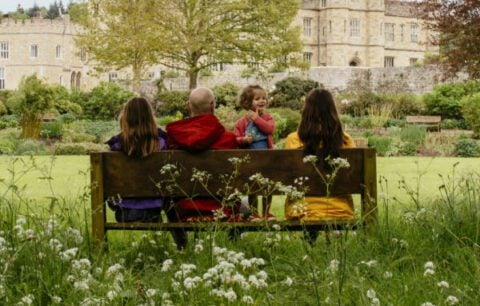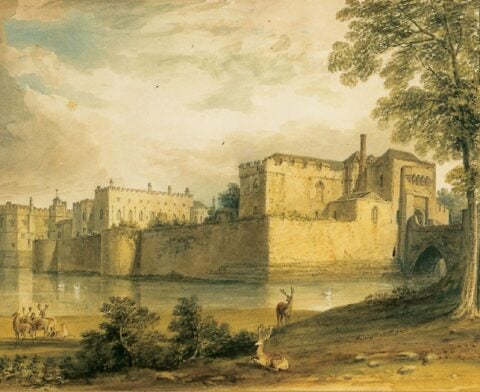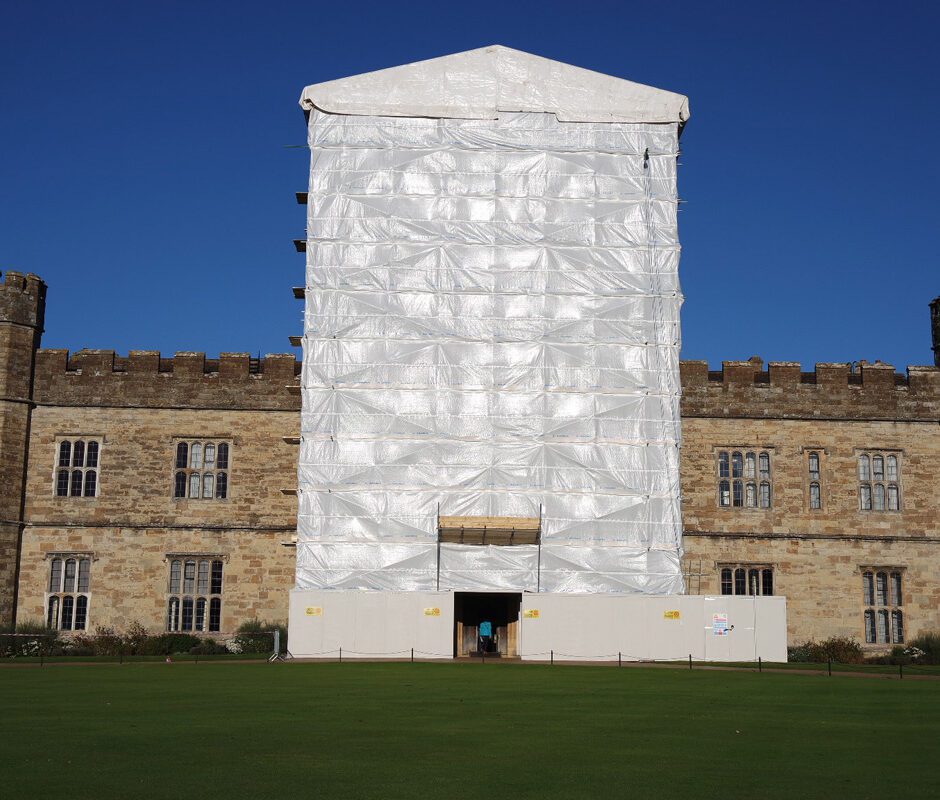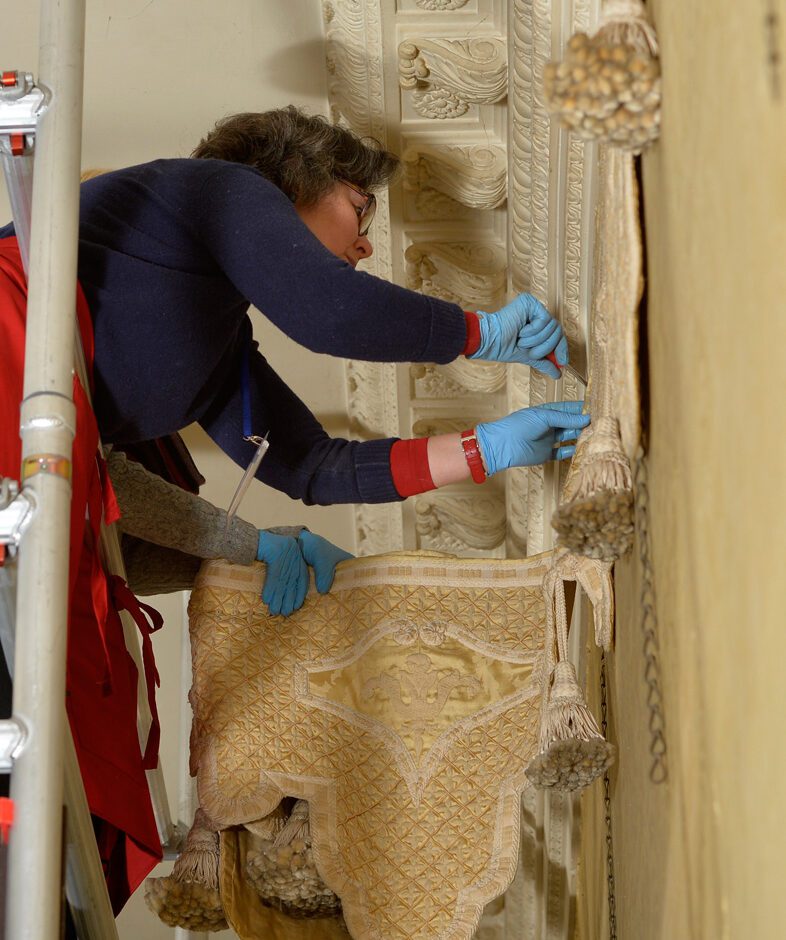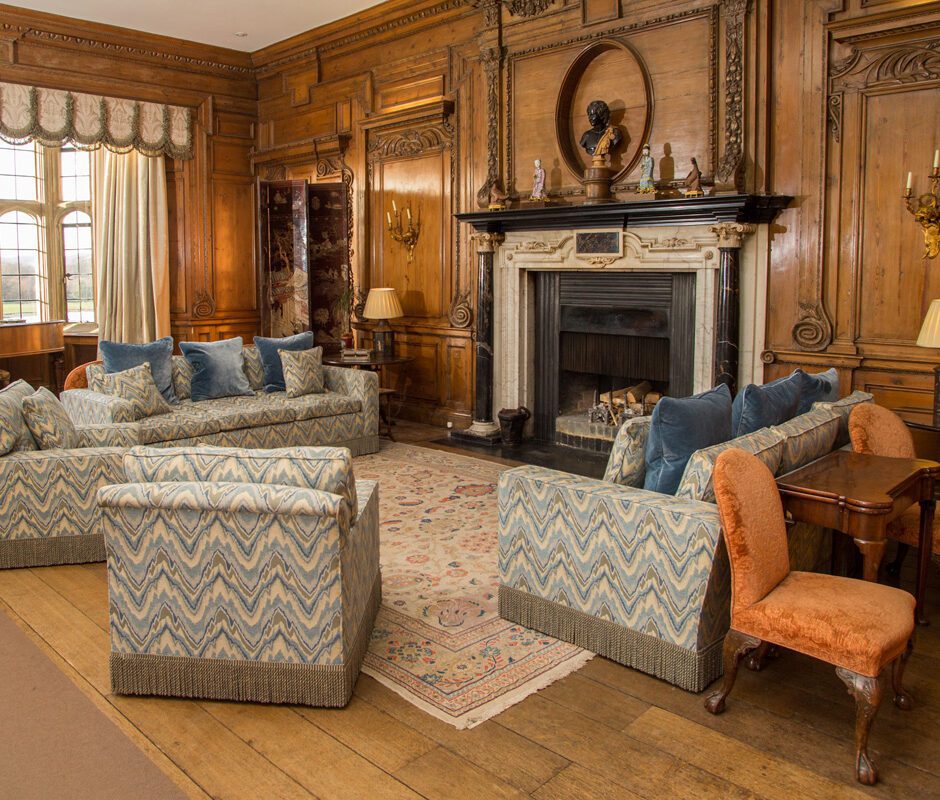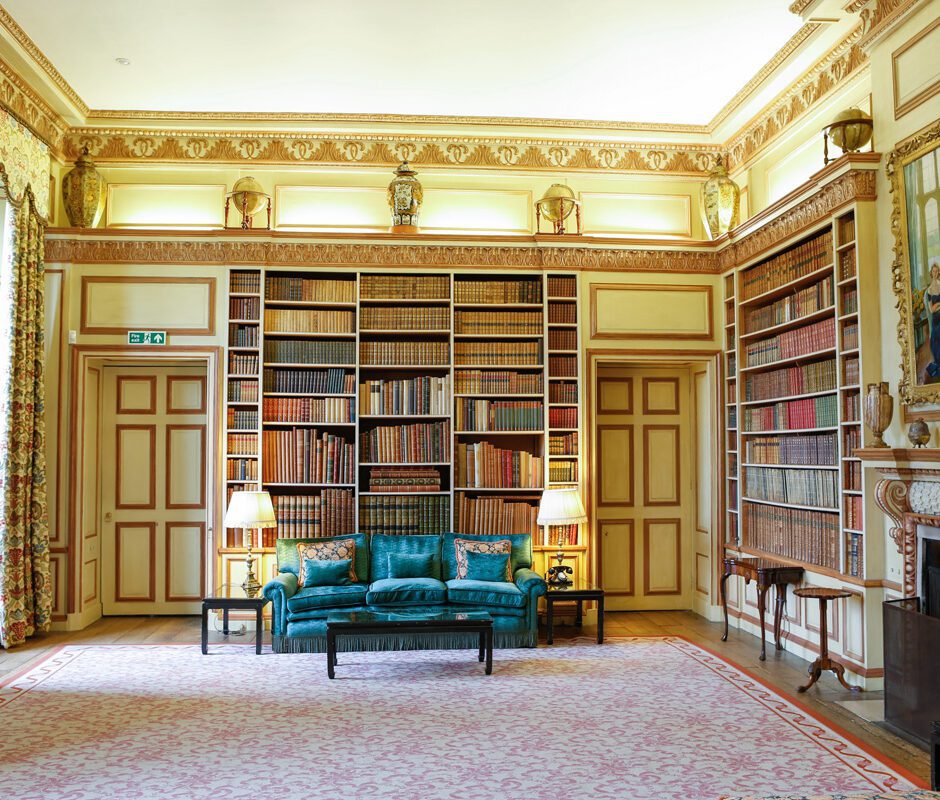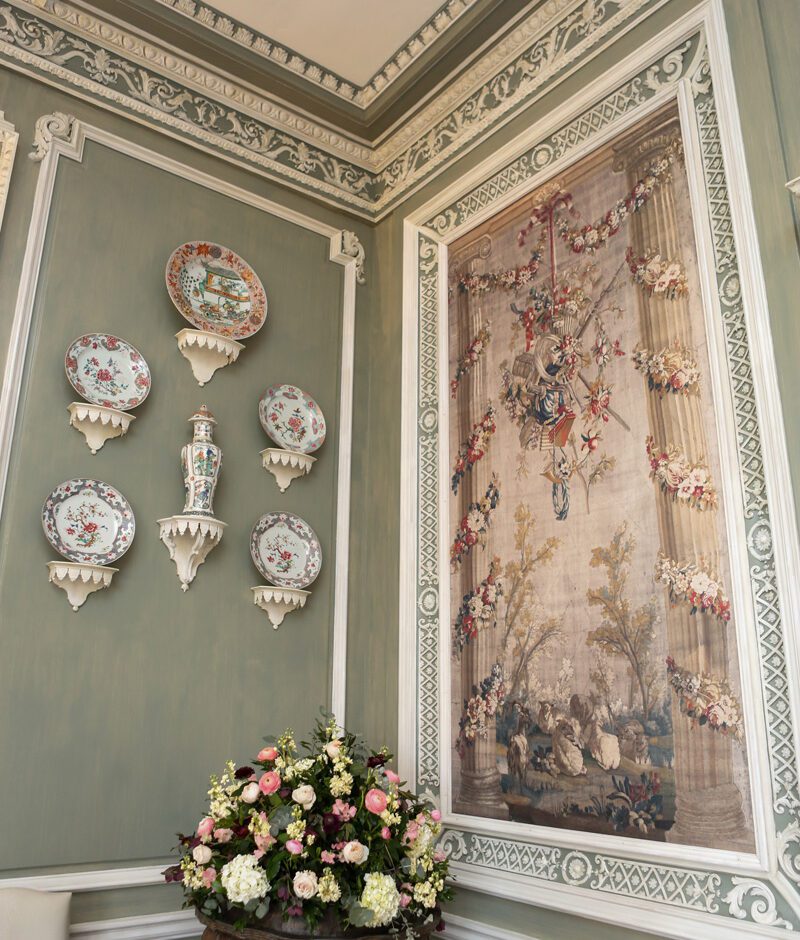The Yellow Drawing Room was first used by Lady Baillie as a Luncheon Room, and was originally decorated with grey oak panelling by her first designer Armand Albert Rateau. In 1938 she and her new designer Stephane Boudin introduced a new decorative scheme which reflected the French 18th century style. It was a magnificent effect with yellow silk damask on the walls and the coveted painting by Tiepolo hanging above the fireplace. It became Lady Baillie’s favourite room, and was the only space in the New Castle that she retained for her own use during the Second World War.
By 2017 the decoration had degraded badly. Whilst the yellow wall silk had survived largely intact for nearly 80 years, it had suffered from light and other environmental damage, resulting in areas of severe wear and degradation, as well as water staining, ingrained dirt and discolouration. The original curtains which had been made from the same yellow silk as the walls, had at some point been sacrificed to repair large areas of the wall hangings, and had been replaced by a sub-standard cotton damask.
The lambrequin – a decorative pelmet positioned below the ceiling cornice and across each window heading – was in better condition, suffering mainly from ingrained smoke and dust. The cornice itself was in good structural condition, but was marred by a thick layer of dirt that had settled on the high relief design.
Research was carried out to identify the original manufacturer of the silk, and fortunately it was found to be Tassinari and Chatel – a company that is still in existence today and able to reweave the silk to the original design and colour. The process took four months and when it was installed, it was done using traditional techniques to stretch and tension the silk over wooden battens.
Paint research was carried out on the cornice which identified it as a distemper paint which required special method of cleaning using triamonium citrate. This had to be done by hand and was carried out using in house expertise within the Heritage team at Leeds Castle.
The lambrequin was sent away for conservation At Zenzie Tinker Conservation in Brighton and involved wet cleaning using solvents to remove ingrained dirt from the tassels, and also some areas of conservation stitching to stabilise light damaged areas.






